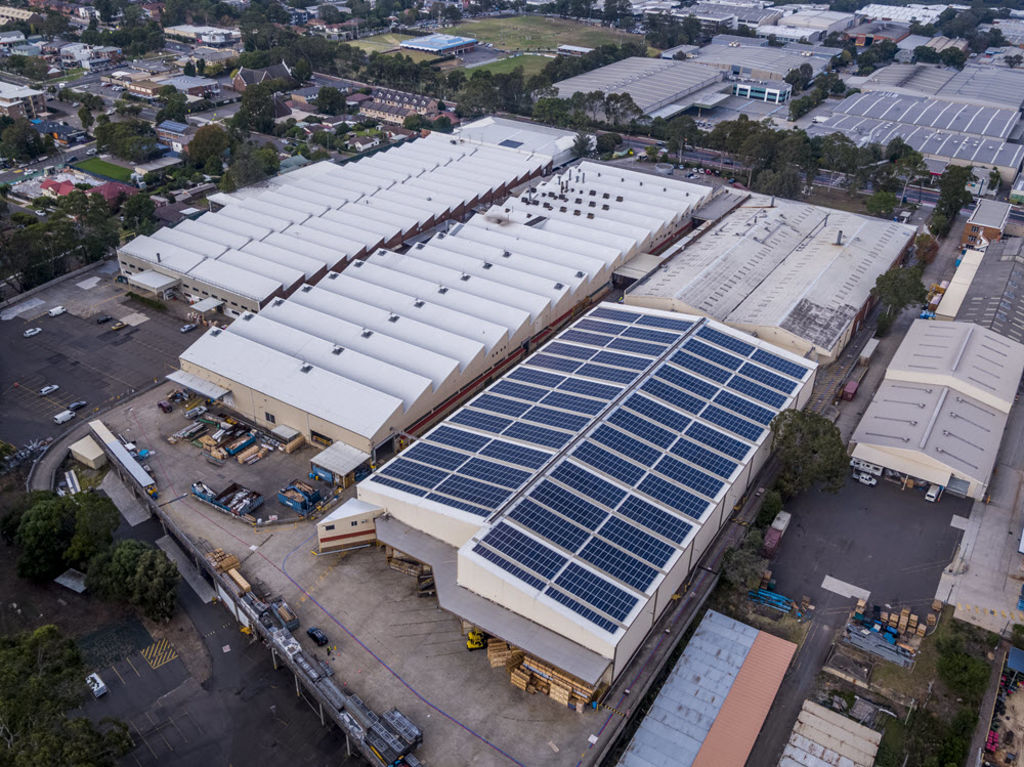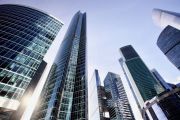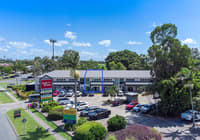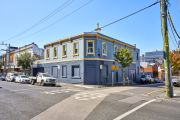
Five-fold growth in solar panels on commercial buildings
A ‘perfect storm’ of rising energy prices, improved technology and cheaper prices has led to a five-fold growth in the number of commercial premises now installing alternative sources of energy such as solar panels.
Over the past three years, there has been a 400 per cent rise in the number of companies turning to solar, says Huon Hoogesteger, founder of Smart Commercial Solar, one of Australia’s largest providers of corporate solar equipment.
“We’re now installing five times the number of solar panels we were installing three years ago,” Mr Hoogesteger said.
“The industry will be installing enough solar panels this year in Australia to meet 10 per cent of the country’s daytime energy requirements for industrial, commercial, retail and utility companies.
He said demand had been steadily increasing over the past three years, when the total commercial market totalled 200 megawatts.
“Now this year, we are going to complete one gigawatt, and the increased demand has meant our company has been growing by 100 per cent year-on-year as more and more companies realise that traditional energy costs are outside their control.”
Rises in electricity prices had hit residential users hard, with 25 per cent of domestic consumers now having some form of solar power capability, reports Tony Crabb, national director of research at commercial real estate agents Cushman & Wakefield.
But it’s only in the past few years that commercial users have been affected and are looking for new energy sources.
“It’s been a perfect storm with the cost of energy and electricity prices rising, solar technology improving as well as getting cheaper all the time, and government incentives and low interest loans,” Mr Crabb said.
“Solar now increasingly makes sense and stacks up as a business case and is being installed often less for environmental reasons and more because of cost factors.
“We’re now seeing more and more of it in industrial and retail premises where you’ve got very large roof spaces and an underlying energy need. If you have temperature-controlled areas in a warehouse, they’ll use a lot of energy and shopping centres tend to be airconditioned and have supermarkets with chilled food areas.”
One of Australia’s largest institutional fund managers QIC, with a nationwide retail portfolio, has recognised the potential of solar, with a $200 million investment from the Clean Energy Finance Corporation (CEFC) into improving its stores’ energy performance.
CEFC’s chief executive Ian Learmonth said Australian shopping centres accounted for 36 per cent of commercial building energy consumption, and were a relatively untapped opportunity to save energy and reduce carbon emissions.
“Shopping centres have substantial energy needs with large enclosed malls and retail areas necessitating ‘year-round’ heating and airconditioning supply,” he said.
“Our finance will demonstrate how energy efficiency technologies and renewable energy sources like solar can make a difference in leading Australia towards net zero carbon buildings.”
Manufacturing companies such as window coverings brand Luxaflex are also converts.
Smart Commercial Solar has just completed a 2080-strong solar panel installation on the roof of their Sydney plant in Rydalmere – the largest installation of Sunpower P19 panels in the world.
It will see the company generating more than 29 million kWh of energy across its 30-year project life, the equivalent of powering over 4600 homes, planting more than 600,000 trees, and saving more than 24,000 tonnes of CO2 emissions.
Organiser of the solar panel installation Peter Hughes, director of finance and logistics at Hunter Douglas, which owns the Luxaflex brand, said: “The system will pay itself back in just over four years and it’s certainly delivering both financially and environmentally.
“It’s now producing 23 per cent of our consumption and insulates us from volatility in the energy market, especially as wholesale prices were moving strongly upwards.
“We were concerned about those prices but we’ve installed the maximum number of solar panels we can over the newer 1980s part of our warehouse, but the rest of our roofline was building in 1953 and wouldn’t be strong enough to support more.”
The majority of solar installed in the commercial sector is currently supplementing traditional energy sources rather than replacing them completely, Tony Crabb said.
But its use will increase as the technology continues to improve and fall in price, with most new buildings already incorporating some form of solar, and it becoming easier to retrograde refit older premises.
One new building in Denmark, for instance, the Copenhagen International School, features the world’s largest solar façade. “Every façade of the building is made up of solar panels,” Mr Crabb said. “It shows how fast technology is moving, and we’ll see more and more commercial buildings go down this path.”
Smart Commercial Solar’s Mr Hoogesteger said installing solar usually took less than five years to break even, with the panels having a 25 to 30-year life expectancy, and with the average contribution being 20 to 40 per cent of a business’s energy use.
An average-sized business, with 1800 square metres of roof space would usually ask for a 250kWh installation that would cost about $350,000.
“That would save them something like $70,000 to $80,000 a year,” he said. “The revenue generated by a solar system is generally $35 to $45 per square metre.”













